What are your chances of acceptance?
Calculate for all schools, your chance of acceptance.

Your chancing factors
Extracurriculars.
College Essay Checklist: Are You Ready to Submit?
←Whom Should I Ask for Help with My College Essay?
How Long Should Your College Essay Be?→
The college admissions process is a human process. An admissions committee filled with real people will evaluate your application, and these people will choose whether to advocate for you to gain admission to the university. So in order to be accepted, you need to stand out from the other applicants and persuade the admissions committee to choose you over students with a similar academic profile. Luckily, college essays are specifically designed to be your tool to stand out in the admissions process.
Given that college essays are so important, it’s important to make sure that they are absolutely perfect before you submit them. How do you make sure your college essays are ready to send to colleges? Make sure you’ve gone through this checklist before you hit that “submit” button!
Why Are College Essays So Important?
A college application has many components – test scores, grades and coursework, your extracurricular profile, recommendation letters, interviews, and, of course, your essays. So why are the essays such an important part if there are so many other components of your application to consider?
Well, most colleges receive thousands of applicants, many of whom have similar academic and extracurricular profiles. In fact, for every spot in a selective university’s admitted class, there are at least four outstanding applicants with similar grades and test scores. So how do admissions committees choose among so many students who have such strong potential? They use their essays to decide who would best fit in with the campus community.
For this reason, your college essays aren’t just about showing off your abilities and accomplishments. It’s about showing who you are as a person, what your values are, and what you’re passionate about. That’s no small task for a short essay. Every word is going to count, so follow the checklist below to make sure that your essay is as strong as it can be.
College Essay Checklist: Before You Submit
1. does your essay share who you are and what you care about.
Your essay needs to be personal. It should share your personality, goals, and voice. Even if a prompt doesn’t explicitly ask you who you are and what you care about, you should use it as an opportunity to showcase your personal qualities. For example, take the following supplemental essay prompt from the University of Chicago’s 2020 Application:
What can actually be divided by zero?
At first glance, this prompt may seem confusing. After all, didn’t we all learn in elementary school math classes that nothing can be divided by zero? More abstract, philosophical prompts like this one are actually ripe opportunities for students to showcase who they are and how they think.
So if you answered a prompt like this very practically, e.g. explaining that the laws of mathematics prove that no real number can be divided by zero, you’re missing out on a key opportunity to show the admissions committee your capability for creativity and abstract thought. Instead of answering a prompt like this literally, you ought to think critically about your own life and see if you can metaphorically or rhetorically link the question to something you have gone through or accomplished.
Alternatively, if you’re more of a logical person and want to answer the question analytically, make sure that you are showcasing your knowledge of various theorems and strategies, and be sure to cite where you learned them. Either way, you are showing the admissions committee how your brain works and how you go about solving problems.
Remember: the goal of an essay is, first and foremost, to showcase yourself. There are no right or wrong answers in college essays, so as long your essay tells the committee something important about you.
2. Do your essays form a portfolio that accurately represents you?
While having to write so many essays is a lot of work, there is an upside. Having multiple essays means you can use each essay to display a different aspect of yourself and your accomplishments. That way, holistically, your application will give a very representative picture of who you are, and you won’t have to leave anything out.
So when you’re evaluating your essays, ask yourself: do your essays depict as many facets of yourself as possible? Specifically, have you repeated a story, experience or quality about yourself in any of the essays you’re going to send to the same college? If you have, then consider editing one of the essays to highlight something that you haven’t yet shared with the admissions committee. The more you can share with them in a limited amount of space, the easier it will be for the admissions committee to imagine how you would fit in at their university.

3. Did you answer the prompt?
Okay, so we’ve talked a lot about making sure that your values, passions, and accomplishments are showcased in your essays, even if the prompt is more abstract. This is certainly important, but it’s also important to make sure you’re showcasing yourself in the context of the essay prompt that was given to you. In other words, you should be sure that at some point in your essay, you answer the essay prompt clearly. If you don’t, you risk coming across as a student who doesn’t know how to follow basic directions.
Moreover, you need to make sure that you answer every part of the essay prompt given. Some essay prompts will just have one part. Some will have many. If you have to answer an essay prompt with multiple parts, be sure you address all of them. Take the following essay prompts from the 2019-2020 College Application Cycle:
Massachusetts Institute of Technology , 2019-2020:
Tell us about the most significant challenge you’ve faced or something important that didn’t go according to plan. How did you manage the situation? (200-250 words)
University of California :
What would you say is your greatest talent or skill? How have you developed and demonstrated that talent over time? (350 words)
In both of these prompts, you are asked to respond to two related questions. If you were to answer the MIT prompt, you would need to not only describe a significant challenge but explain how you overcame it. For the University of California prompt, you’d not only need to explain your greatest skill but outline how you’ve cultivated it over time. If you miss any of those parts in your response, you will not have fully answered the prompt.
4. Did You Stay Within the Word Count?
Most main college essays (like the Common App essays) have a word limit of anywhere from 250-650 words. Supplemental essay prompts generally have word limit of 100-400 words. Either way, you need to make sure that you stay very close to the upper word limit in your response.
As a general rule, you should try to stay within 10% of the upper word limit. So if the word limit for one of your essays is 650 words, your essay shouldn’t be fewer than 585 words. Keep in mind that most online applications will cut off your essay at the word limit, so try not to go over the word count. However, on the other extreme, you don’t want to make your essay too short, as it may make it seem like you don’t care about the application. After all, every extra bit of space in your essays is an opportunity to further impress the admissions committee, so you should take advantage of it.
For some more details on how long your college essays should be, check out our previous post entitled How Long Should Your College Essay Be? What is the Ideal Length?
5. Did You Proofread?
Here are some things to look out for as you look over your essay:
Incorrect grammar and spelling mistakes. These can make a well-thought-out essay seem subpar in the eyes of an admissions committee.
Awkward or formal wording. Read your essay aloud and listen to how it sounds. If it doesn’t sound natural, then you’re likely not displaying your authentic self to the admissions committee. Consider shifting some of the wording to sound more like something you would actually say, even if it means you have to take out a bit of the advanced vocabulary and complex sentence structure.
Instances of telling, instead of showing. One of the biggest mistakes students make is to tell, instead of show. Here’s an example of telling: “It was a rainy and gloomy day.” Here’s an example of showing: “The gray clouds hovered ominously above the lake. I felt a drop. Then another. And another. It began pouring, and I frantically tried to row the canoe back to shore.” It’s much more engaging to read the second example, as you feel as if you’re there with the writer.
Repeated sentence structure and vocab. Do you use the same word over and over again? Do you begin lots of sentences in a row with “I”? As you’re reading your essay, make sure that you’re using varied language to keep things interesting.
Inconsistent style. While your language should be varied, your style shouldn’t. If you use contractions or acronyms, use them throughout the essay. If you begin the essay in past tense, keep it that way, or make sure there’s clear demarcation when you shift tenses.
Also, if you’re reused an essay from another school’s application, give it an extra read-through to make sure that you’ve replaced all of the mentions of and references to the other college. You don’t want the admissions committee from UC Berkeley reading about how thrilled you are to take advantage of the opportunities that Tufts has to offer. It would not bode well for your likelihood of acceptance to Berkeley.
Of course, it is okay to reuse essays if the prompts are similar, but just be sure to double and triple-check that it doesn’t seem like you’re reusing an essay meant for another college. Also, if you’re answering the famous “ Why This College ” essay, we at CollegeVine recommend that you not reuse another essay. This essay should include specific resources and opportunities that you plan to take advantage of at each university, so you shouldn’t be able to use the same essay for two different schools. In fact, if you’re able to reuse a “Why This College” essay, that’s a sign that you need to rework the essay and make it more specific to the college.
6. Did You Get a Second and Third Set of Eyes on Your Essay?
It’s important to get another person or two to read your essay before you submit. The best people to look at your essays are those who are well-versed in creative essay writing, but also people who know you well. Older peers who have gone through the admissions process successfully can offer some of the best advice. English or Communications teachers who know you well also make great proofreaders, as do writing-proficient friends and family.
If you’re not sure who to ask, you can also use our free peer essay review tool . You can get feedback on your essays, and improve your own writing skills by reviewing others’ essays.
7. Did You Revise and Proofread Again?
Once you’ve read through your essays and had others give suggestions, make the necessary edits and corrections. Then, be sure you proofread your essays one more time before you hit submit. You should try not to submit an essay that hasn’t been read at least a few times all the way through, without any changes. Consider even reading your essay out loud and printed out (have a pen at the ready!), as you may catch things you missed when reading silently.
Want help with your college essays to improve your admissions chances? Sign up for your free CollegeVine account and get access to our essay guides and courses. You can also get your essay peer-reviewed and improve your own writing skills by reviewing other students’ essays.
Related CollegeVine Blog Posts

English and Related Literature
University | A to Z | Departments
- Department of English and Related Literature
- Writing at York
- Writing Resources
- 10 Things To Do Before You Submit Your Essay
- Resources for schools
- Writing Curriculum
- Writer in Residence
- Writing Community
- Getting help with your writing
- Active Silence
- Writing Team
- Equality and diversity
- Current staff and students
10 things to do before you submit your essay
Final draft checklist.
You have finished your essay and you think it is ready for submission. Now go through the checklist below, as it should help you spot possible flaws in your essay before submitting it. You are also strongly advised to have the essay ready between 24 and 12 hours before the final submission deadline (ideally, if not earlier), as some of the “things” in this checklist require reading the essay a few times.
Read your essay for references
1. check you have referenced every idea that is not yours.
Your marker will look for your own individual voice and original ideas as well as engagement with secondary sources. You have to be particularly careful in differentiating what you have quoted or paraphrased from somewhere else, and what is actually your own opinion. It also has to appear clear to the marker whether you are paraphrasing a source or quoting directly from it.
2. Check your references are accurate and correct
Whether you choose to use MLA or Chicago (footnotes and bibliography), make sure you are following your referencing style closely. If you are in doubt, you should ask one of your tutors.
Is your bibliography in order?
3. Check you have referenced primary sources as well
This may appear obvious, but make sure you have referenced primary sources too, and the editions you are using. If you are quoting from a play, indicate where in play that particular line is from (eg Act I, Scene II, ll. 123-38); if from a novel, the page number will suffice.
It may be useful to divide your bibliography in “primary” and “secondary” sources, and have the primary sources listed first.
Read your essay for style
4. edit for grammar and spelling.
Look for mistakes in sentence construction, and typos.
5. Edit for syntax and punctuation
Do the sentences flow as you read them? Is the connection between sentences and also that between clauses clear? It may help to read your essay out loud, or only the sentences that look dubious. Your argument will appear much weaker if the logical links between sentences are not clear. If they are not clear to you, they will not be clear to your reader either.
Is a semi-colon really the punctuation mark you need to separate those two clauses?
6. Edit for style and vocabulary
Avoid vague words and broad, banal generalizations, ie ‘Sappho’s poetry is beautiful’, ‘ The Odyssey is the most famous book in the history of Western literature’, ‘No woman was free to act in Ancient Rome’. Consider whether the words you have picked at central moments in your argument are the best possible words you could use.
Is the register you have used similar to what you would see in scholarly essays? Check if you have used any colloquial words or phrases, as those are generally not appropriate for a university essay.
Read for argument and structure
7. edit for structure.
Is any paragraph in your essay longer than a page? If so, it may need cutting or re-formulating. Most of the times, long paragraphs read better when they are split into two shorter ones.
8. Check the flow of your argument
Does your argument flow naturally from one paragraph to the next? Is your argument clearly laid out from the beginning? Are you making it clear when you are disagreeing with a source or an interpretation?
9. Re-read your introduction
Your introduction should be neither too short nor too long; ideally, you would aim it to be around 300-500 words (NB: this will depend on the overall length of your essay). Make it sound interesting: your introduction is the first thing your marker will read and it will shape their judgement of your essay as they go on reading it. Of course, an academic essay is not a catchy blog post, but there are many ways in which you can make the first paragraph interesting, such as using a nice quotation from the primary source or one of the secondary sources you have read, or for example engaging actively with the essay question/title. The other thing that the introduction should do is give a sense of what is going to happen in the actual body of your essay: this should not be a summary of your arguments (you do not want to give too much away from the very beginning!), but it should give the marker a good grasp of your essay theme and argument.
10. Re-read your conclusion
Do not think of your conclusion as the moment when you submit your essay in sighs of relief (well, it may be that too!), but rather as the culmination of your argument, when the whole of your essay comes together. It is not enough to write “In conclusion” to conclude. Your conclusion is also not the same as your introduction, although you may want to draw on what you mentioned there and create connections. Similarly as with your introduction, your conclusion is ultimately the last thing your marker will read and you should want to impress them a little. Especially, you want them to feel you have reached a conclusion, rather than simply found one.
Department of English and Related Literature University of York , York , YO10 5DD , UK Tel: work +44 (0) 1904 323366 | [email protected]
Legal statements | Privacy | Cookies | Accessibility © University of York | Modify | Direct Edit

Want to create or adapt books like this? Learn more about how Pressbooks supports open publishing practices.
12.2 Developing a Final Draft of a Research Paper
Learning objectives.
- Revise your paper to improve organization and cohesion.
- Determine an appropriate style and tone for your paper.
- Revise to ensure that your tone is consistent.
- Edit your paper to ensure that language, citations, and formatting are correct.
Given all the time and effort you have put into your research project, you will want to make sure that your final draft represents your best work. This requires taking the time to revise and edit your paper carefully.
You may feel like you need a break from your paper before you revise and edit it. That is understandable—but leave yourself with enough time to complete this important stage of the writing process. In this section, you will learn the following specific strategies that are useful for revising and editing a research paper:
- How to evaluate and improve the overall organization and cohesion
- How to maintain an appropriate style and tone
- How to use checklists to identify and correct any errors in language, citations, and formatting
Revising Your Paper: Organization and Cohesion
When writing a research paper, it is easy to become overly focused on editorial details, such as the proper format for bibliographical entries. These details do matter. However, before you begin to address them, it is important to spend time reviewing and revising the content of the paper.
A good research paper is both organized and cohesive. Organization means that your argument flows logically from one point to the next. Cohesion means that the elements of your paper work together smoothly and naturally. In a cohesive research paper, information from research is seamlessly integrated with the writer’s ideas.
Revise to Improve Organization
When you revise to improve organization, you look at the flow of ideas throughout the essay as a whole and within individual paragraphs. You check to see that your essay moves logically from the introduction to the body paragraphs to the conclusion, and that each section reinforces your thesis. Use Checklist 12.1 to help you.
Checklist 12.1
Revision: Organization
At the essay level
- Does my introduction proceed clearly from the opening to the thesis?
- Does each body paragraph have a clear main idea that relates to the thesis?
- Do the main ideas in the body paragraphs flow in a logical order? Is each paragraph connected to the one before it?
- Do I need to add or revise topic sentences or transitions to make the overall flow of ideas clearer?
- Does my conclusion summarize my main ideas and revisit my thesis?
At the paragraph level
- Does the topic sentence clearly state the main idea?
- Do the details in the paragraph relate to the main idea?
- Do I need to recast any sentences or add transitions to improve the flow of sentences?
Jorge reread his draft paragraph by paragraph. As he read, he highlighted the main idea of each paragraph so he could see whether his ideas proceeded in a logical order. For the most part, the flow of ideas was clear. However, he did notice that one paragraph did not have a clear main idea. It interrupted the flow of the writing. During revision, Jorge added a topic sentence that clearly connected the paragraph to the one that had preceded it. He also added transitions to improve the flow of ideas from sentence to sentence.
Read the following paragraphs twice, the first time without Jorge’s changes, and the second time with them.
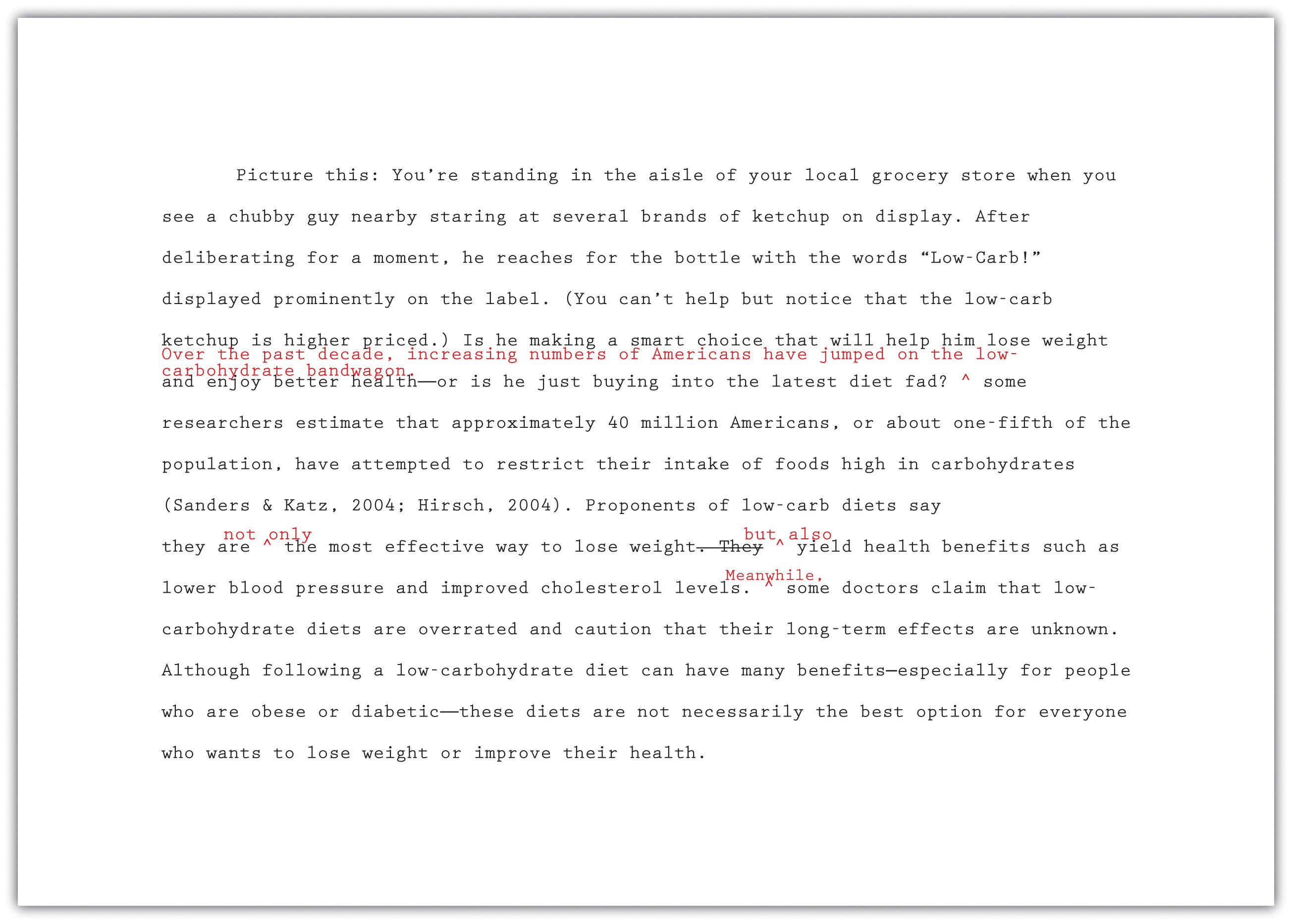
Follow these steps to begin revising your paper’s overall organization.
- Print out a hard copy of your paper.
- Read your paper paragraph by paragraph. Highlight your thesis and the topic sentence of each paragraph.
- Using the thesis and topic sentences as starting points, outline the ideas you presented—just as you would do if you were outlining a chapter in a textbook. Do not look at the outline you created during prewriting. You may write in the margins of your draft or create a formal outline on a separate sheet of paper.
- Next, reread your paper more slowly, looking for how ideas flow from sentence to sentence. Identify places where adding a transition or recasting a sentence would make the ideas flow more logically.
- Review the topics on your outline. Is there a logical flow of ideas? Identify any places where you may need to reorganize ideas.
- Begin to revise your paper to improve organization. Start with any major issues, such as needing to move an entire paragraph. Then proceed to minor revisions, such as adding a transitional phrase or tweaking a topic sentence so it connects ideas more clearly.
Collaboration
Please share your paper with a classmate. Repeat the six steps and take notes on a separate piece of paper. Share and compare notes.
Writers choose transitions carefully to show the relationships between ideas—for instance, to make a comparison or elaborate on a point with examples. Make sure your transitions suit your purpose and avoid overusing the same ones. For an extensive list of transitions, see Chapter 8 “The Writing Process: How Do I Begin?” , Section 8.4 “Revising and Editing” .
Revise to Improve Cohesion
When you revise to improve cohesion, you analyze how the parts of your paper work together. You look for anything that seems awkward or out of place. Revision may involve deleting unnecessary material or rewriting parts of the paper so that the out-of-place material fits in smoothly.
In a research paper, problems with cohesion usually occur when a writer has trouble integrating source material. If facts or quotations have been awkwardly dropped into a paragraph, they distract or confuse the reader instead of working to support the writer’s point. Overusing paraphrased and quoted material has the same effect. Use Checklist 12.2 to review your essay for cohesion.
Checklist 12.2
Revision: Cohesion
- Does the opening of the paper clearly connect to the broader topic and thesis? Make sure entertaining quotes or anecdotes serve a purpose.
- Have I included support from research for each main point in the body of my paper?
- Have I included introductory material before any quotations? Quotations should never stand alone in a paragraph.
- Does paraphrased and quoted material clearly serve to develop my own points?
- Do I need to add to or revise parts of the paper to help the reader understand how certain information from a source is relevant?
- Are there any places where I have overused material from sources?
- Does my conclusion make sense based on the rest of the paper? Make sure any new questions or suggestions in the conclusion are clearly linked to earlier material.
As Jorge reread his draft, he looked to see how the different pieces fit together to prove his thesis. He realized that some of his supporting information needed to be integrated more carefully and decided to omit some details entirely. Read the following paragraph, first without Jorge’s revisions and then with them.
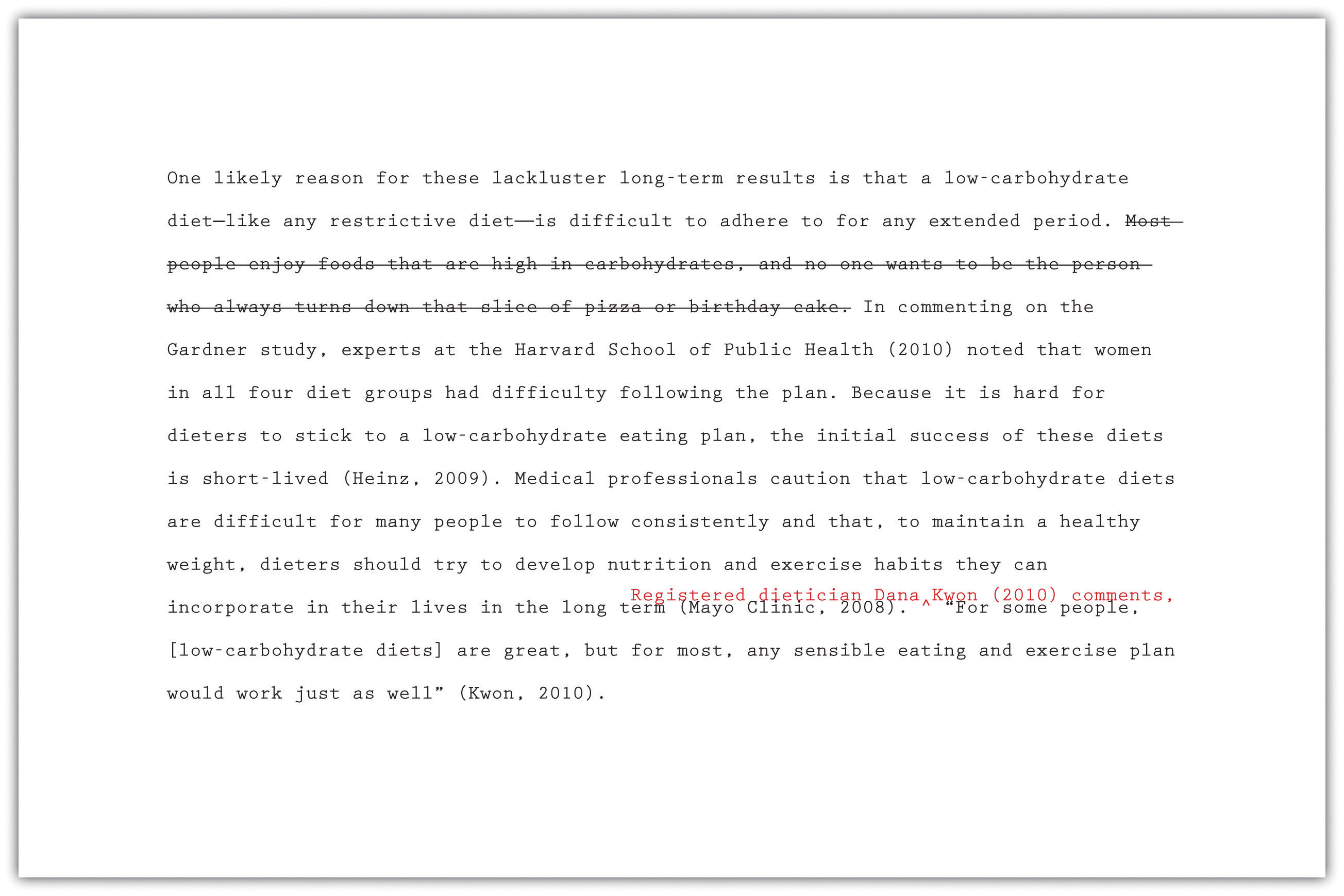
Jorge decided that his comment about pizza and birthday cake came across as subjective and was not necessary to make his point, so he deleted it. He also realized that the quotation at the end of the paragraph was awkward and ineffective. How would his readers know who Kwon was or why her opinion should be taken seriously? Adding an introductory phrase helped Jorge integrate this quotation smoothly and establish the credibility of his source.
Follow these steps to begin revising your paper to improve cohesion.
- Print out a hard copy of your paper, or work with your printout from Note 12.33 “Exercise 1” .
- Read the body paragraphs of your paper first. Each time you come to a place that cites information from sources, ask yourself what purpose this information serves. Check that it helps support a point and that it is clearly related to the other sentences in the paragraph.
- Identify unnecessary information from sources that you can delete.
- Identify places where you need to revise your writing so that readers understand the significance of the details cited from sources.
- Skim the body paragraphs once more, looking for any paragraphs that seem packed with citations. Review these paragraphs carefully for cohesion.
- Review your introduction and conclusion. Make sure the information presented works with ideas in the body of the paper.
- Revise the places you identified in your paper to improve cohesion.
Please exchange papers with a classmate. Complete step four. On a separate piece of paper, note any areas that would benefit from clarification. Return and compare notes.
Writing at Work
Understanding cohesion can also benefit you in the workplace, especially when you have to write and deliver a presentation. Speakers sometimes rely on cute graphics or funny quotations to hold their audience’s attention. If you choose to use these elements, make sure they work well with the substantive content of your presentation. For example, if you are asked to give a financial presentation, and the financial report shows that the company lost money, funny illustrations would not be relevant or appropriate for the presentation.
Using a Consistent Style and Tone
Once you are certain that the content of your paper fulfills your purpose, you can begin revising to improve style and tone . Together, your style and tone create the voice of your paper, or how you come across to readers. Style refers to the way you use language as a writer—the sentence structures you use and the word choices you make. Tone is the attitude toward your subject and audience that you convey through your word choice.
Determining an Appropriate Style and Tone
Although accepted writing styles will vary within different disciplines, the underlying goal is the same—to come across to your readers as a knowledgeable, authoritative guide. Writing about research is like being a tour guide who walks readers through a topic. A stuffy, overly formal tour guide can make readers feel put off or intimidated. Too much informality or humor can make readers wonder whether the tour guide really knows what he or she is talking about. Extreme or emotionally charged language comes across as unbalanced.
To help prevent being overly formal or informal, determine an appropriate style and tone at the beginning of the research process. Consider your topic and audience because these can help dictate style and tone. For example, a paper on new breakthroughs in cancer research should be more formal than a paper on ways to get a good night’s sleep.
A strong research paper comes across as straightforward, appropriately academic, and serious. It is generally best to avoid writing in the first person, as this can make your paper seem overly subjective and opinion based. Use Checklist 12.3 on style to review your paper for other issues that affect style and tone. You can check for consistency at the end of the writing process. Checking for consistency is discussed later in this section.
Checklist 12.3
- My paper avoids excessive wordiness.
- My sentences are varied in length and structure.
- I have avoided using first-person pronouns such as I and we .
- I have used the active voice whenever possible.
- I have defined specialized terms that might be unfamiliar to readers.
- I have used clear, straightforward language whenever possible and avoided unnecessary jargon.
- My paper states my point of view using a balanced tone—neither too indecisive nor too forceful.
Word Choice
Note that word choice is an especially important aspect of style. In addition to checking the points noted on Checklist 12.3, review your paper to make sure your language is precise, conveys no unintended connotations, and is free of biases. Here are some of the points to check for:
- Vague or imprecise terms
- Repetition of the same phrases (“Smith states…, Jones states…”) to introduce quoted and paraphrased material (For a full list of strong verbs to use with in-text citations, see Chapter 13 “APA and MLA Documentation and Formatting” .)
- Exclusive use of masculine pronouns or awkward use of he or she
- Use of language with negative connotations, such as haughty or ridiculous
- Use of outdated or offensive terms to refer to specific ethnic, racial, or religious groups
Using plural nouns and pronouns or recasting a sentence can help you keep your language gender neutral while avoiding awkwardness. Consider the following examples.
- Gender-biased: When a writer cites a source in the body of his paper, he must list it on his references page.
- Awkward: When a writer cites a source in the body of his or her paper, he or she must list it on his or her references page.
- Improved: Writers must list any sources cited in the body of a paper on the references page.
Keeping Your Style Consistent
As you revise your paper, make sure your style is consistent throughout. Look for instances where a word, phrase, or sentence just does not seem to fit with the rest of the writing. It is best to reread for style after you have completed the other revisions so that you are not distracted by any larger content issues. Revising strategies you can use include the following:
- Read your paper aloud. Sometimes your ears catch inconsistencies that your eyes miss.
- Share your paper with another reader whom you trust to give you honest feedback. It is often difficult to evaluate one’s own style objectively—especially in the final phase of a challenging writing project. Another reader may be more likely to notice instances of wordiness, confusing language, or other issues that affect style and tone.
- Line-edit your paper slowly, sentence by sentence. You may even wish to use a sheet of paper to cover everything on the page except the paragraph you are editing—that forces you to read slowly and carefully. Mark any areas where you notice problems in style or tone, and then take time to rework those sections.
On reviewing his paper, Jorge found that he had generally used an appropriately academic style and tone. However, he noticed one glaring exception—his first paragraph. He realized there were places where his overly informal writing could come across as unserious or, worse, disparaging. Revising his word choice and omitting a humorous aside helped Jorge maintain a consistent tone. Read his revisions.
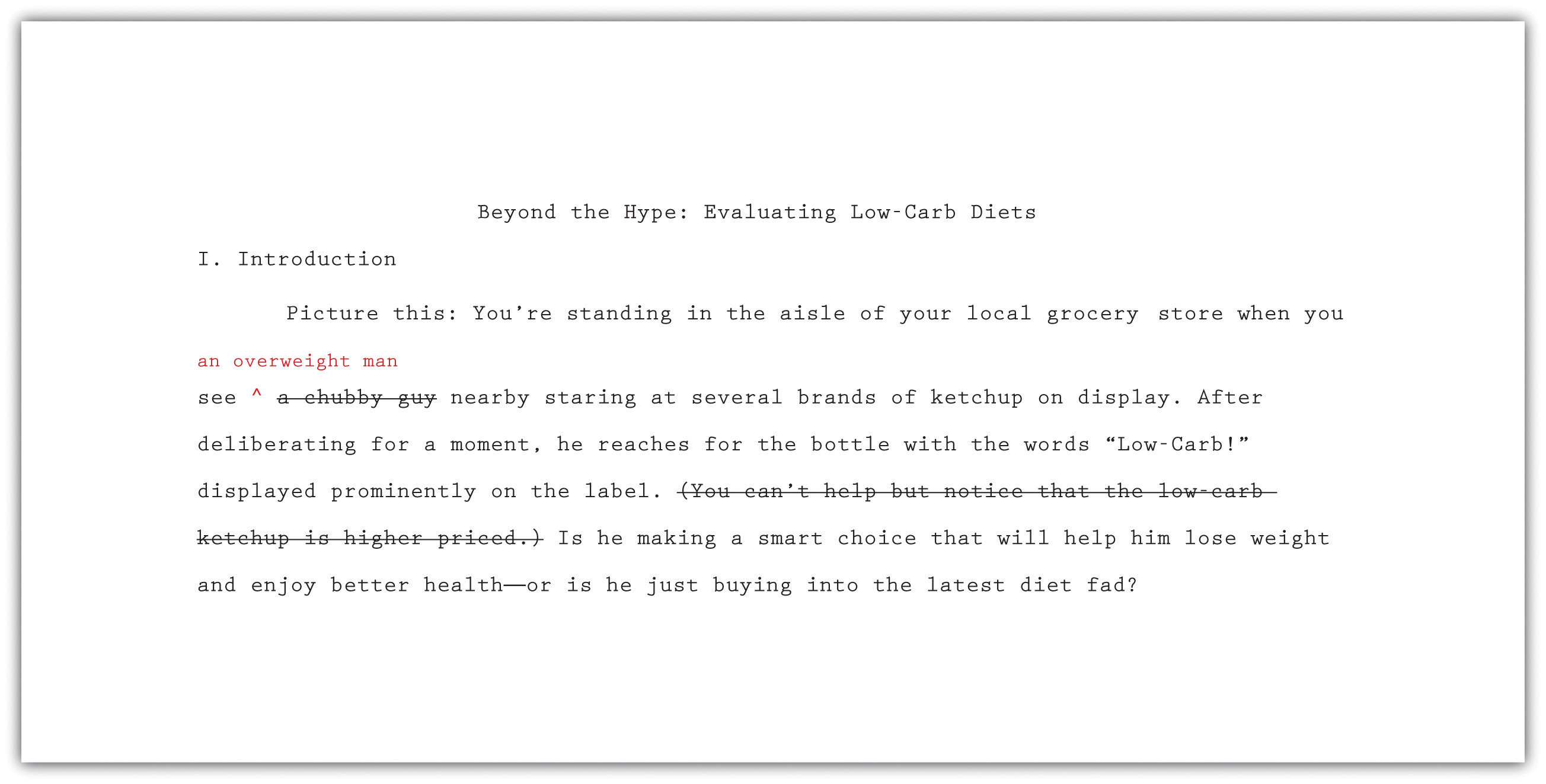
Using Checklist 12.3, line-edit your paper. You may use either of these techniques:
- Print out a hard copy of your paper, or work with your printout from Note 12.33 “Exercise 1” . Read it line by line. Check for the issues noted on Checklist 12.3, as well as any other aspects of your writing style you have previously identified as areas for improvement. Mark any areas where you notice problems in style or tone, and then take time to rework those sections.
- If you prefer to work with an electronic document, use the menu options in your word-processing program to enlarge the text to 150 or 200 percent of the original size. Make sure the type is large enough that you can focus on only one paragraph at a time. Read the paper line by line as described in step 1. Highlight any areas where you notice problems in style or tone, and then take time to rework those sections.
Please exchange papers with a classmate. On a separate piece of paper, note places where the essay does not seem to flow or you have questions about what was written. Return the essay and compare notes.
Editing Your Paper
After revising your paper to address problems in content or style, you will complete one final editorial review. Perhaps you already have caught and corrected minor mistakes during previous revisions. Nevertheless, give your draft a final edit to make sure it is error-free. Your final edit should focus on two broad areas:
- Errors in grammar, mechanics, usage, and spelling
- Errors in citing and formatting sources
For in-depth information on these two topics, see Chapter 2 “Writing Basics: What Makes a Good Sentence?” and Chapter 13 “APA and MLA Documentation and Formatting” .
Correcting Errors
Given how much work you have put into your research paper, you will want to check for any errors that could distract or confuse your readers. Using the spell-checking feature in your word-processing program can be helpful—but this should not replace a full, careful review of your document. Be sure to check for any errors that may have come up frequently for you in the past. Use Checklist 12.4 to help you as you edit:
Checklist 12.4
Grammar, Mechanics, Punctuation, Usage, and Spelling
- My paper is free of grammatical errors, such as errors in subject-verb agreement and sentence fragments. (For additional guidance on grammar, see Chapter 2 “Writing Basics: What Makes a Good Sentence?” .)
- My paper is free of errors in punctuation and mechanics, such as misplaced commas or incorrectly formatted source titles. (For additional guidance on punctuation and mechanics, see Chapter 3 “Punctuation” .)
- My paper is free of common usage errors, such as alot and alright . (For additional guidance on correct usage, see Chapter 4 “Working with Words: Which Word Is Right?” .)
- My paper is free of spelling errors. I have proofread my paper for spelling in addition to using the spell-checking feature in my word-processing program.
- I have checked my paper for any editing errors that I know I tend to make frequently.
Checking Citations and Formatting
When editing a research paper, it is also important to check that you have cited sources properly and formatted your document according to the specified guidelines. There are two reasons for this. First and foremost, citing sources correctly ensures that you have given proper credit to other people for ideas and information that helped you in your work. Second, using correct formatting establishes your paper as one student’s contribution to the work developed by and for a larger academic community. Increasingly, American Psychological Association (APA) style guidelines are the standard for many academic fields. Modern Language Association (MLA) is also a standard style in many fields. Use Checklist 12.5 to help you check citations and formatting.
Checklist 12.5
Citations and Formatting
- Within the body of my paper, each fact or idea taken from a source is credited to the correct source.
- Each in-text citation includes the source author’s name (or, where applicable, the organization name or source title) and year of publication. I have used the correct format of in-text and parenthetical citations.
- Each source cited in the body of my paper has a corresponding entry in the references section of my paper.
- My references section includes a heading and double-spaced, alphabetized entries.
- Each entry in my references section is indented on the second line and all subsequent lines.
- Each entry in my references section includes all the necessary information for that source type, in the correct sequence and format.
- My paper includes a title page.
- My paper includes a running head.
- The margins of my paper are set at one inch. Text is double spaced and set in a standard 12-point font.
For detailed guidelines on APA and MLA citation and formatting, see Chapter 13 “APA and MLA Documentation and Formatting” .
Following APA or MLA citation and formatting guidelines may require time and effort. However, it is good practice for learning how to follow accepted conventions in any professional field. Many large corporations create a style manual with guidelines for editing and formatting documents produced by that corporation. Employees follow the style manual when creating internal documents and documents for publication.
During the process of revising and editing, Jorge made changes in the content and style of his paper. He also gave the paper a final review to check for overall correctness and, particularly, correct APA or MLA citations and formatting. Read the final draft of his paper.
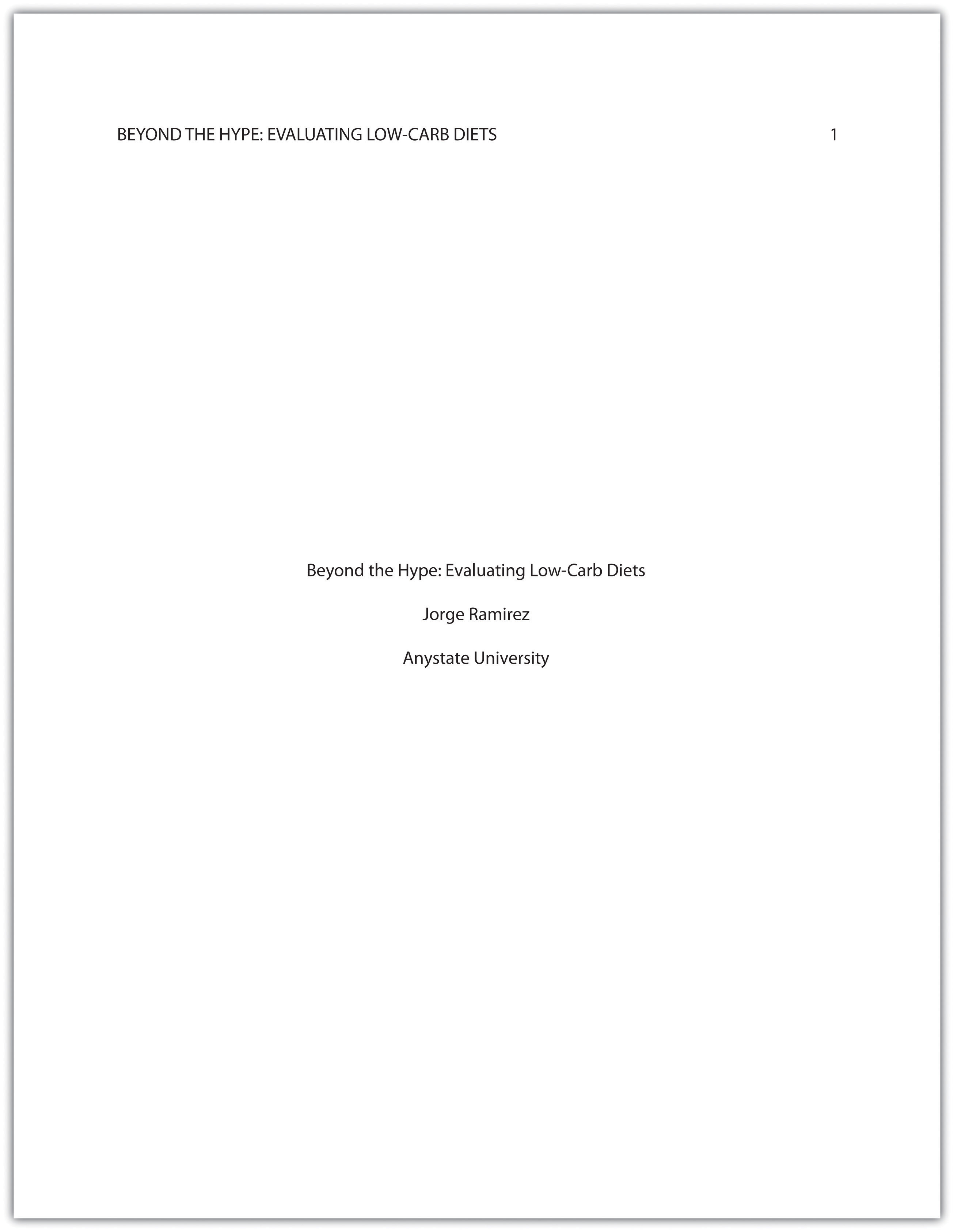
Key Takeaways
- Organization in a research paper means that the argument proceeds logically from the introduction to the body to the conclusion. It flows logically from one point to the next. When revising a research paper, evaluate the organization of the paper as a whole and the organization of individual paragraphs.
- In a cohesive research paper, the elements of the paper work together smoothly and naturally. When revising a research paper, evaluate its cohesion. In particular, check that information from research is smoothly integrated with your ideas.
- An effective research paper uses a style and tone that are appropriately academic and serious. When revising a research paper, check that the style and tone are consistent throughout.
- Editing a research paper involves checking for errors in grammar, mechanics, punctuation, usage, spelling, citations, and formatting.
Writing for Success Copyright © 2015 by University of Minnesota is licensed under a Creative Commons Attribution-NonCommercial-ShareAlike 4.0 International License , except where otherwise noted.
This Writing Checklist Will Help You Ace Your Final Paper
- Organization
- Word Choice
- Introduction
- Formatting and Finishing Touches
By Lyndsey Gresehover
You’ve completed the brainstorming and research. You have created an essay outline that serves as your roadmap (or “skeleton” as some call it) and have even finished the writing. However, there is still one more equally important step to ensure your paper has all the required elements … your writing checklist.
Checklists are tools we use in lots of things we do. Think about those to-do lists you make, the sticky note reminders you leave around the house, and even the alerts you set up and save on your phone. All of these are strategies to remind ourselves of what we need to do. The same goes for writing checklists.
An easy way to make certain that you have included the essential components in writing a final paper is to break down the checklist into seven areas:
- Word choice
- Introduction paragraph
- Body paragraphs
- Conclusion paragraph
- Formatting and finishing touches
Then take a look into each area and focus on exactly what is needed.
1. Organization ✅
- Did you include the correct number of paragraphs? Depending on the type of paper you’re writing, this can vary. It’s important to discuss the minimum and maximum number of paragraphs with your teacher.
- Are your paragraphs in a logical and cohesive order?
- Does your paper provide a clear focus?
Learn more about the importance and structure of a thesis statement at our article for the term.
2. Mechanics ✅
- Did you read your paper out loud to check for any grammatical errors? Did you write in complete sentences, punctuate correctly, and use a spell checker? Dictionary’s Grammar Coach ™ uses machine learning technology uniquely designed to catch grammar and spelling errors.
- Are you varying sentence structure? You want to use a combination of simple, compound, complex, and compound-complex sentences.
3. Word choice ✅
- Are you using effective, age-appropriate vocabulary words ?
- Did you use sensory and/or figurative language in your writing? This makes it more entertaining for the reader and is a great way to describe and show comparisons in your writing.
- Do you include strong adjectives and verbs? For example, instead of using the verb ran , you could use dart , dash , or scurry . Again, a great idea would be to take advantage of Dictionary’s Grammar Coach™. Its Synonym Swap will find the best nouns, adjectives, and more to guide you toward clearer, stronger, writing.
4. Introduction paragraph ✅
- Check to see that you included a strong hook that will grab the reader’s attention. An engaging hook could be a quote, statistic, fact, or anecdote .
- Did you include background information on your topic?
- Does your thesis statement include a claim as well as reasons to support the claim?
- Is your thesis the last sentence in the intro paragraph?
We know writing that thesis statement can be confounding! Thankfully we have a helpful guide for you on how to do it.
5. Body paragraphs ✅
- Does each body paragraph begin with a topic sentence that introduces your reason for that paragraph?
- Does each body paragraph have at least two pieces of evidence from outside sources (trusted website, book, etc.)?
- Did you properly cite any evidence that was not your own using either quotations or stating where the information was found?
- Did every body paragraph include a concluding statement?
6. Conclusion paragraph ✅
- Did you restate the thesis statement without saying exactly what you stated in the introduction paragraph? This time, it should force the reader to think even deeper about the topic.
- Did you summarize the main points or reasons addressed in the paper?
- Was your concluding statement a call to action that will force the reader to believe in what was written?
Start your conclusion off right with these nuanced alternatives to saying “in conclusion.”
7. Formatting and finishing touches ✅
Formatting of the paper.
An area that is often overlooked is how to correctly format the paper. First, make sure that the font you use is Times New Roman size 12, and double space all lines. Both MLA and Chicago formatting styles suggest doing so for legibility. The rest of the style guidelines cited will refer to MLA style.
According to MLA style, you should format a title page like so:
- The title page should include the page number at the top, on the right side of page.
- In the center of the paper, halfway down the page, put the title of your paper.
- The next line should have your first and last name.
- On the next line, put your teacher’s name.
- On the last line, add the date.
- Again, all lines should be double-spaced, even the title page.
In-text citations
When citing information from outside sources within your paper, there are a couple things to keep in mind. MLA style is one citation style widely used by schools, academic departments, and instructors. According to MLA style:
- When using someone else’s information, you must cite the source by putting in parentheses the author’s last name followed by a comma and the page or paragraph number you found the information on, like so: (Cisneros 56)
- If you’re citing the information word for word, the information must be placed in quotation marks: In The House on Mango Street , Esperanza’s aunt encourages her to keep writing, as “It will keep you free” (Cisneros 56).
Works cited page
The following information will be needed when citing a source on your works cited page.
- Title of source
- Title of the container
- Other contributors
- Publication Date
- Location of the source (such as URL or page range)
For example:
Nordhaus, William D. “After Kyoto: Alternative Mechanisms to Control Global Warming.” American Economic Review , vol. 96, no. 2, 2006, pp. 31-34.
Using a free tool such as Easybib.com can help you to format your works cited page correctly.
Submitting your paper
Another discussion that you will want to have with your teacher (if he/she hasn’t already made this clear) is how they would like you to submit the paper. Do they want you to print the paper and turn it in in person, or would they like you to submit the paper digitally? Depending on the course and what learning management system (LMS) is used (Blackboard, Canvas, Google Classroom, Schoology, etc.) you will likely have the assignment created by the teacher and then submit it accordingly. Again, this varies based on the LMS that is used.
Following a coherent checklist will help you not only to become a better writer, but it will also make certain that you include all of the necessary elements that make up a great paper.
In addition, it’s important to have a peer look over your paper using the checklist. Having a double set of eyes is always helpful as the peer reviewer may catch mistakes that you missed or offer ideas that you didn’t think of originally.
To help get you started using the checklist strategy, we have an interactive digital and printable list that incorporates all of the necessary requirements that should be included in your paper. You can access this resource here . Feel free to print if you would like a checklist that you can write on.
An extra effort now will pay off in the long run when you turn in a final paper that impresses your teachers!
Unlock a new world of learning!
- Enter Your Email *
- Name This field is for validation purposes and should be left unchanged.
Lyndsey Gresehover is a middle school ELA teacher, curriculum designer, and published blogger. You can view her tech-infused, innovative resources at her Teachers Pay Teachers store, Lit with Lyns . She also has a blog by the same name, which can be found at LitwithLyns.com where she shares ideas and resources for middle school English/Language Arts. For more by Lyndsey, read: Does The Million Word Gap Exist? | 10 Tips For Giving A Memorable Final Presentation In The Digital Age
Get ready for the limelight with these tips on delivering a great presentations.

Trending Words
[ mis -tr uh l ]
- By clicking "Sign Up", you are accepting Dictionary.com Terms & Conditions and Privacy policies.
- Comments This field is for validation purposes and should be left unchanged.

The Ultimate Essay Checklist
#scribendiinc
Getting Started
Essay writing: it might not be your favorite thing in the world, but the essay editing experts at Scribendi are here to change that by making it a little less scary and a lot more fun! (Okay—perhaps "fun" is a bit strong. How about "bearable"?)
While there are four main types of essays—expository, persuasive, analytical, and argumentative—the basic structure of any essay is the same:
- An introductory paragraph
- At least three body paragraphs
- A concluding paragraph
- A bibliography
Generally, the higher your level of education, the more complex your essay structure will be. While high school students typically stick with the five-paragraph essay, university and graduate students are expected to discuss topics that require more than five paragraphs to flesh out. Whatever type of essay you're writing, following this basic format will help you accomplish your intended goal.
This ultimate essay checklist will provide you with everything you need to unleash your knowledge and express your creativity while following standard essay-writing conventions. This essay checklist will show you how to write a stellar essay of any style, and it will give you the confidence to explore and write about any topic.
General Tips
- Get an early start. It's much easier to come up with and organize your ideas when you're not pressed for time and are able to conduct proper research. The earlier you start, the easier it will be . . . so don't procrastinate!
- Choose a topic. Your instructor will likely give you a handful of topics to choose from or a general topic area. Depending on the instructions you're given, you will have to select and refine the topic. You can choose something you're already interested in or something you know nothing about—either way, you'll be doing your research and learning along the way.
- Use various sources of information. With the vast amount of information available today, you're far from limited when it comes to choosing your sources. Use books, websites, journal articles, research studies, interviews—the world is your oyster! Just remember to keep track of your sources so that you can cite them properly and add them to your bibliography. Also check what kinds of sources your professor wants: primary, secondary, or both?
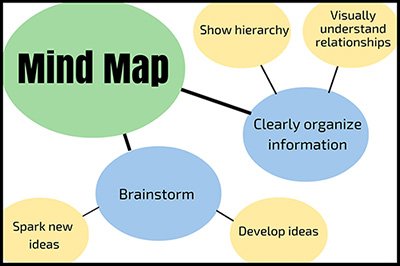
- Do not plagiarize. Cite your work and give credit where it's due. Do not take credit for others' thoughts or ideas, and make yourself aware of the basic rules for avoiding plagiarism .
- Create an outline. Make a rough outline of the sections and points of your essay. Writing your ideas down will help you organize your thoughts and see what you need to add, change, or rearrange.
- Provide evidence. Use evidence from your research to support your ideas. Each body paragraph will contain an original idea, but you will need to back it up with evidence to make it credible.
- Don't use "I" statements or make sweeping generalizations. Stay objective, and be specific.
- Grab your audience's attention. Come up with an attention-grabbing title and introduction that will make your reader want more.
- Use logic. Within each paragraph and throughout your essay, keep your ideas coherent and linear.
- Use an essay style that complements your content (and is in accordance with your professor's guidelines). There are four main types of essays:
- Expository : The writer explains an idea or issue to the reader.
- Persuasive : The writer tries to convince the reader to take his or her position on an idea, issue, or topic.
- Analytical : The writer examines and analyzes an idea, issue, or topic.
- Argumentative : The writer tries to prove that his or her position is correct.
- Answer what , why , and how . Regardless of the type of essay you write, it should answer each of these questions.
- Don't feel obliged to write your first draft in order, from introduction to bibliography. It can be difficult to write a completely linear essay when you have lots of different ideas, so start by writing whatever you're ready to write—you can put all the pieces together later. This will make the process easier and less stressful.
Introduction
The introductory paragraph broadly introduces your topic by giving your reader an overview of what your essay will be about and the points that will be discussed. It often starts with a general statement that acts as the topic sentence for the paragraph, and it provides a general discussion that leads to a specific thesis statement at the end of the paragraph.
- Do not explicitly explain your intentions. For example, do not say, "The purpose of this essay is to . . ." Instead, allow the topic sentence to help your reader identify and determine your purpose. By the time readers get to the end, they will have a comprehensive understanding of your essay and its intent.
- Choose a thesis statement that the body of your essay will be able to support. This thesis will be the "hook" of your essay, and it is often one of the last sentences in the introductory paragraph. A hook is a line that grabs the reader's attention—it "hooks" them, just like a fishing hook grabs a fish. The goal of the hook is to keep your reader interested and to clearly indicate the purpose of the essay.
The body of the essay develops the argument that was outlined in the introduction.
- Use topic sentences. The topic sentence of each paragraph provides a brief summary of what the paragraph is about.

- Set up the transition to your next point. The concluding sentence of each paragraph should function as a hook and transition into the next paragraph.
- Discuss and support a different idea in each paragraph. Limit each paragraph to one main idea. The topic sentence of each paragraph will help you organize your own thoughts and let the reader know what that paragraph is about. If you're writing a five-paragraph essay, follow this general outline:
- The first paragraph contains the strongest argument and ties into the hook at the end of the introductory paragraph. Discuss your first point, elaborate on it, and provide evidence in support of it. Close with a transitional hook.
- The second paragraph contains a more neutral argument, and it ties into the hook at the end of the first paragraph. Discuss your second point, elaborate on it, and provide evidence to support it. Close with a transitional hook.
- The third paragraph contains another strong argument and ties into the hook at the end of the second paragraph. Discuss your third point, elaborate on it, and provide evidence to support it. Close with a transitional sentence that leads smoothly into the concluding paragraph.
In contrast to the introductory paragraph, the concluding paragraph starts out specific (by reintroducing the thesis) and becomes more general. It ties your ideas together and brings your paper to a culmination.
The concluding paragraph provides a general discussion of your findings and shows the reader that you have accomplished what you intended to at the outset.
- Restate your thesis (though not necessarily using the exact same words). In contrast to the introductory paragraph, the concluding paragraph starts out specific (by reintroducing the thesis) and becomes more general. It ties your ideas together and brings your paper to a close.
- Discuss your findings based on your research and evidence. Has your thesis been proven?
- Don't introduce any new ideas. The point here is to sum up and wrap up your essay, not to confuse readers by providing new information.
- End on a high note. You can finish the essay in a variety of ways. For example, you might provide suggestions for future research, state a call to action, share a quote, or ask a question. Depending on the topic and purpose of your essay, choose a closing line that will fit well with the rest of your essay's structure and leave readers thinking " Wow! "
Bibliography/Works Cited
The Bibliography or Works Cited page is a list of all the references you used throughout the paper. It can be alphabetized or numbered depending on the style guide you are using. While a Bibliography includes every resource you consulted when preparing your essay, a Works Cited page includes only the resources cited in your essay. Find out which is required by consulting the style guide assigned by your professor.
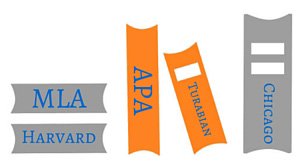
- To make creating your reference list easier, use citation software . There are many different options out there, and several of the software programs are free (especially if you're enrolled in a university that has a subscription to one of the services). These citation software programs essentially create your bibliography for you, making the process fast, easy, and accurate.
Review, Revise, Rework
- Give yourself a day or two before rereading and revising your essay. This way, you will have a fresh set of eyes, making it easier to catch any mistakes.
- Don't be afraid to rearrange paragraphs, delete sentences, or add information. Reading through your essay a few days after writing it makes it much easier to see where and how the structure needs to be changed.
- Correct any errors in spelling, grammar, and punctuation. Check the essay yourself, have a friend review it, or better yet, have your essay edited by a professional editing service .
- Avoid colloquialisms and contractions. ('Cause it just ain't professional in an academic setting. Lol.)
- Analyze the flow of your essay , and make sure that your ideas and paragraphs flow smoothly from one to the next.
- Cut out any extraneous information or fluff. We've all done it, but adding extra words to make a word count requirement doesn't fly with most professors, and it will definitely detract from the strength of your essay.
Now, it's Time to Write!
It may seem overwhelming, but writing an essay doesn't have to be stressful. After coming up with a topic, doing some research, and creating a basic outline, you're ready to start filling in the gaps. Using primary and/or secondary research, back up your ideas and support them with credible sources. Just don't forget to cite those sources! Once you've written your first draft, take a day or two away from your paper so you will have a clear head when you come back to revise it. As suggested, you may even want to have your paper edited by the professionals at Scribendi , who will not only correct any surface-level errors but will also check for consistency, clarity, and cohesiveness, providing comments and suggestions along the way.
Essay writing is so much easier if you're equipped with the right tools, and that's what we hope we've given you with this ultimate essay checklist. Now that you know how to write an essay (regardless of the style), we're confident in your ability to write an essay about any topic that your instructor might have in store for you. Happy writing!
Image sources: Foundry/Pixabay.com, succo/Pixabay.com, ClkerFreeVectorImages/Pixabay.com
Ask a Professional to Edit Your Essay
Hire one of our expert editors , or get a free sample.
Have You Read?
"The Complete Beginner's Guide to Academic Writing"
Related Posts

Escape the Five-Paragraph Essay

Essay Writing Help

How to Write a Great Thesis Statement
Upload your file(s) so we can calculate your word count, or enter your word count manually.
We will also recommend a service based on the file(s) you upload.
| File | Word Count | Include in Price? |
|---|
English is not my first language. I need English editing and proofreading so that I sound like a native speaker.
I need to have my journal article, dissertation, or term paper edited and proofread, or I need help with an admissions essay or proposal.
I have a novel, manuscript, play, or ebook. I need editing, copy editing, proofreading, a critique of my work, or a query package.
I need editing and proofreading for my white papers, reports, manuals, press releases, marketing materials, and other business documents.
I need to have my essay, project, assignment, or term paper edited and proofread.
I want to sound professional and to get hired. I have a resume, letter, email, or personal document that I need to have edited and proofread.
Prices include your personal % discount.
Prices include % sales tax ( ).

Final Checklist for Writing Essays
After you have completed a draft of your paper, think about each of the following questions. If you find yourself unsure of the answers, ask a friend, your professor, or someone in the Teaching and Writing Center for help. If you answer ‘no’ to any of the following questions, you have probably identified a place where your paper needs a bit more work.
- Does my paper respond to the assignment? Does it answer the question? Is it in the proper form?
- Do I have a thesis statement? Does it express my main idea? Is it too narrow? Too broad? Misleading?
- Is my paper well organized? Does it have an introduction, a body and a conclusion? Do my paragraphs flow logically and smoothly? Do I include transitions?
- Is my argument well-developed? Do I give sufficient support in examples, quotations, and details? Do I use too many quotations? Do I quote enough? Do I have any questions unanswered?
- Does all the information I have included relate to my thesis? Is it all necessary? Does it add to my argument, or detract from it?
- Is my tone appropriate to the assignment, subject matter and the course? Do I sound too informal? Too stuffy? At any point am I condescending or offensive?
- Am I writing to the proper audience? Who am I supposed to be writing for? My professor? A classmate? A random person off the street? Is my paper geared for this audience?
- Do I use proper citations? Have I made it clear which ideas are mine and which come from my sources? Have I followed the citation style my professor suggested? If there is no specification, did I follow a standard form in a published style manual?
- Have I spell-checked my paper? Have I proofread it for typos and grammar problems?
- Does my paper end with a strong conclusion? Does it relate back to my thesis? Do I have any loose ends? Does it feel finished?
NOTE: Grammar, punctuation, and other sentence-level concerns are very important to any history essay. Before you turn in your paper, be sure that you do not have any mechanical errors. However, DO NOT start worrying about sentence-level problems until you are confident that you have finished all the big picture concerns.

- Walden University
- Faculty Portal
Writing a Paper: Conclusions
Writing a conclusion.
A conclusion is an important part of the paper; it provides closure for the reader while reminding the reader of the contents and importance of the paper. It accomplishes this by stepping back from the specifics in order to view the bigger picture of the document. In other words, it is reminding the reader of the main argument. For most course papers, it is usually one paragraph that simply and succinctly restates the main ideas and arguments, pulling everything together to help clarify the thesis of the paper. A conclusion does not introduce new ideas; instead, it should clarify the intent and importance of the paper. It can also suggest possible future research on the topic.
An Easy Checklist for Writing a Conclusion
It is important to remind the reader of the thesis of the paper so he is reminded of the argument and solutions you proposed.
Think of the main points as puzzle pieces, and the conclusion is where they all fit together to create a bigger picture. The reader should walk away with the bigger picture in mind.
Make sure that the paper places its findings in the context of real social change.
Make sure the reader has a distinct sense that the paper has come to an end. It is important to not leave the reader hanging. (You don’t want her to have flip-the-page syndrome, where the reader turns the page, expecting the paper to continue. The paper should naturally come to an end.)
No new ideas should be introduced in the conclusion. It is simply a review of the material that is already present in the paper. The only new idea would be the suggesting of a direction for future research.
Conclusion Example
As addressed in my analysis of recent research, the advantages of a later starting time for high school students significantly outweigh the disadvantages. A later starting time would allow teens more time to sleep--something that is important for their physical and mental health--and ultimately improve their academic performance and behavior. The added transportation costs that result from this change can be absorbed through energy savings. The beneficial effects on the students’ academic performance and behavior validate this decision, but its effect on student motivation is still unknown. I would encourage an in-depth look at the reactions of students to such a change. This sort of study would help determine the actual effects of a later start time on the time management and sleep habits of students.
Related Webinar
Didn't find what you need? Email us at [email protected] .
- Previous Page: Thesis Statements
- Next Page: Writer's Block
- Office of Student Disability Services
Walden Resources
Departments.
- Academic Residencies
- Academic Skills
- Career Planning and Development
- Customer Care Team
- Field Experience
- Military Services
- Student Success Advising
- Writing Skills
Centers and Offices
- Center for Social Change
- Office of Academic Support and Instructional Services
- Office of Degree Acceleration
- Office of Research and Doctoral Services
- Office of Student Affairs
Student Resources
- Doctoral Writing Assessment
- Form & Style Review
- Quick Answers
- ScholarWorks
- SKIL Courses and Workshops
- Walden Bookstore
- Walden Catalog & Student Handbook
- Student Safety/Title IX
- Legal & Consumer Information
- Website Terms and Conditions
- Cookie Policy
- Accessibility
- Accreditation
- State Authorization
- Net Price Calculator
- Contact Walden
Walden University is a member of Adtalem Global Education, Inc. www.adtalem.com Walden University is certified to operate by SCHEV © 2024 Walden University LLC. All rights reserved.

- Campus Culture
- High School
- Top Schools
The Final Countdown: The Final Essay Checklist
- expert advice
- college application essays
- writing tips

‘Tis the season to be jolly… but it’s also the season for making massive edits to your essays and supplements. We calculated that an average student applying to 10 colleges will have around 9,500 words to submit by his or her deadline—that’s 1 Common App essay, 2 supplements each for 6 schools, 2 non-Common App essays each for 2 schools, and 2 additional essays for specialized programs. And that’s just for final drafts!
We all know that good writing takes time, revision, and valuable feedback. If you haven’t had someone else to look over your essay drafts already, you should do so now. Having another person’s perspective can be illuminating – a family member or a close friend can give you some valuable, added insight into your own life that you yourself may have missed.
However, it’s still up to you to do you final revisions and hit that “submit” button right at the very end. It is cliché to say that every student has his/her own voice and you need to stay true to yourself to be successful in the college application process, but I firmly believe that it is true. Admissions officers can smell disingenuous applicants (read: applications who BS) from a mile away and it is your job to make your story as compelling as possible. Here is a quick checklist to ensure that your essays are written in your best, most genuine voice:
1. Have you written about something that only you can write about, in a way that only you can write? Do not compare yourself to (or write from the perspectives of) individuals who a) live in other parts of the world, b) have accomplished so much more than you, or c) have undergone hardships that you have not. Stay away from using linguistically-challenging SAT vocabulary and from discussing world issues because they might seem impressive – this is not an academic essay, and you are not writing a statement to get Secretary-General Ban Ki-Moon into college. You can’t sell yourself using ideas that are not personally relevant to you.
2. Are you being as specific as you can be? If you have sentences that say something like “I learned so much from this experience,” add more detail to say what exactly you have learned. These lessons can be anything from some simple skills like “how to pickle a cucumber” to a valuable quality like “the need to think before I speak.” If you are writing about how you solved a problem, say HOW you managed to do this – the process of problem solving tells the reader a lot more about you as a person than the outcome. Detailed, specific writing makes for a more compelling, believable read.
3. Are you being positive, constructive, and forward-looking? Going to college is the next stage in your life – it’s a chance to prove yourself, explore new things, and learn! All these things are very positive and colleges would like to see that you have a constructive outlook about both the past and the future to undergo these challenges. Strip out sentences that say “there was nothing I could do” and instead focus on the things that you actually can do – surely, they are numerous and exciting as well.
4. Have you highlighted the qualities you want to bring out? What do you want admissions officers to say about you when they read your application? Imagine one admissions officer saying to another, “I see that you’re reading Susie’s application—what do you think about her?” What adjectives do you want the latter to use? The easiest way to ensure that words describing good qualities come out of his/her mouth is to write them in your essays yourself. In other words, put the words into their mouths! I’m not talking about boring (albeit perfectly fine) qualities like “nice” and “cool” – instead, you want them to say that Susie is “fiercely competitive yet always puts her friends first” or that Susie is “a sensitive, critical thinker.” They can’t say these things, however, unless you put them into the text of your writing.
After all this is done, give your essays to someone who doesn’t know you very well and ask him or her to read it. Your main goal is to come off as intelligent, mature, and likeable. Just remember, you don’t need to be cosmopolitan, jaded, or a superhero to write a good essay about yourself.
Good luck, and have fun!
Sarah is a consultant at Ivy Gate Learning Center in Hong Kong.
Browse Successful Application Files

Last week, Prompt's CEO shared what mistakes to avoid in your college essay. In Part 2 of this two-part blog series, learn how to pick an essay topic. The key: focus on an admissions officer’s...

With an otherwise great college application, how important can college essays really be? When only 1 in 5 students applying to selective colleges have compelling essays, make sure you avoid this essay mistake....

In this second part of his two-part series, college admissions coach Justin Taylor explains key admissions lessons from 2020, an unprecedented year of firsts, that can help you strategize as we enter into this next application...

In Part one of this two-part series, college admissions coach Justin Taylor explains key lessons about 2020, “a year like no other,” that could seriously boost your chances in 2021, including smarter list building and transcript GPA...

We are so excited to announce that for this year’s scholarship, we selected five scholarship winners to maximize the impact of our $5,000 college scholarship prize money....
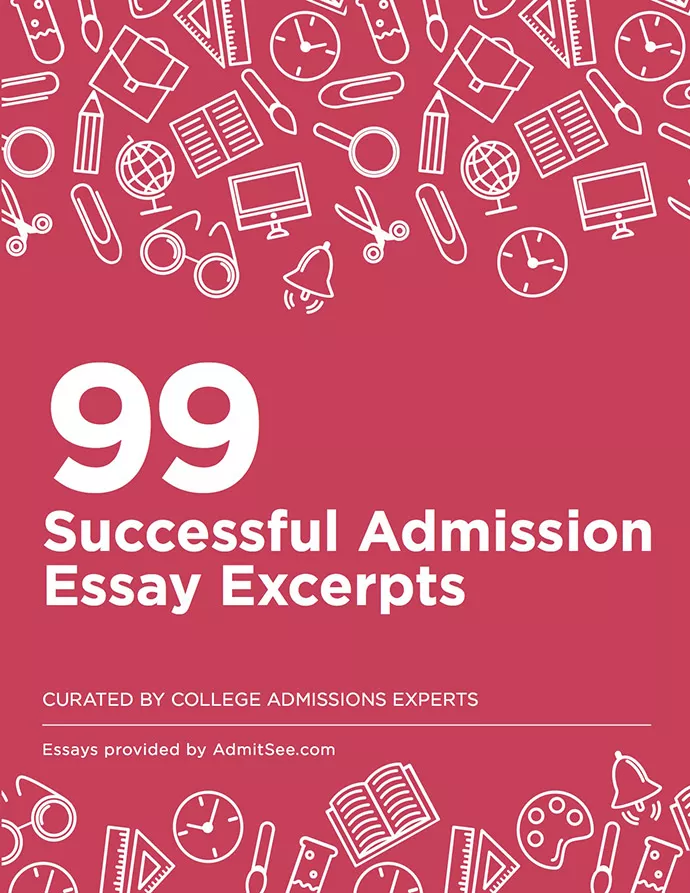
- 1. Webinar Series: College Application Prep for High School Juniors
- 2. College Application Lessons from 2020-2021: Strategizing through Covid Changes (Part 2)
- 3. College Admissions Lessons from 2020-2021: Strategizing through Covid Changes (Part 1)
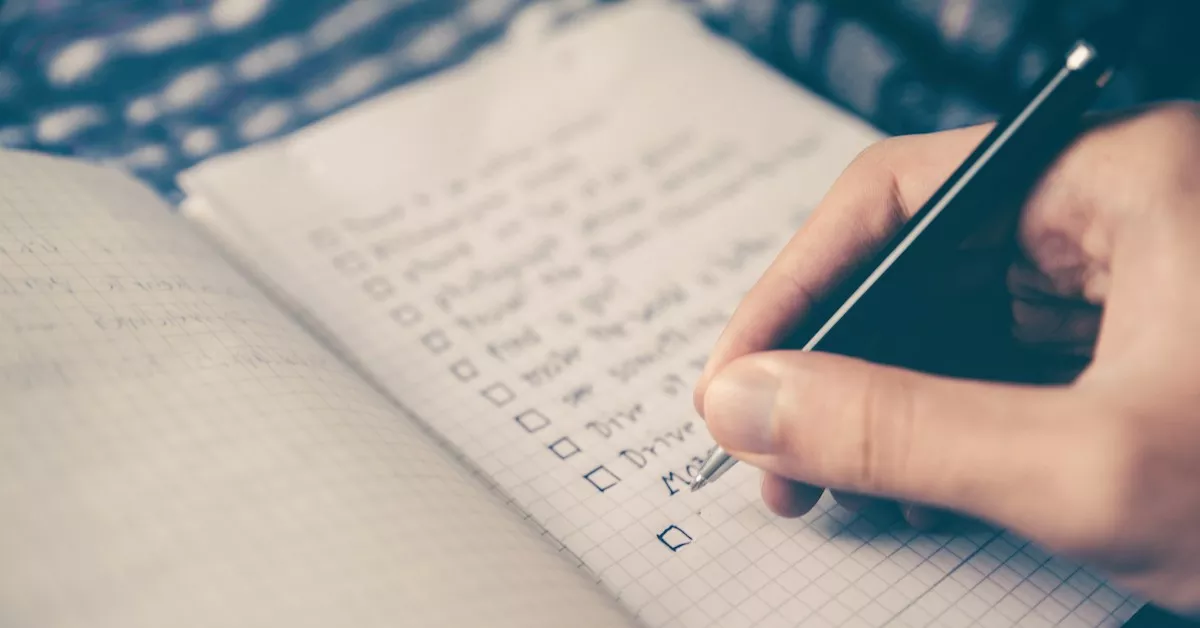
- 5. COVID-19 and Your College Essay: Should You Write About It?
- 6. College Search: How to Find Your Best College Fit
- 7. College Tours 101: Everything You Need to Know
- 8. Waitlisted? 5 Ways to Move from the College Waitlist to Acceptance
- 9. When (and why) should you send additional materials to colleges you’re interested in?
- 10. How to Make Your College Essay Stand Out
- 1. How to Write College Essays to Boost your Chances Part 2: Focusing the Priority
- 2. How to Write College Essays to Boost your Chances Part 1: Biggest Essay Mistakes
- 3. College Application Lessons from 2020-2021: Strategizing through Covid Changes (Part 2)
- 5. Winners of the AdmitSee 2020 College Scholarship
- 6. COVID-19 and Your College Essay: Should You Write About It?
- 7. Education, Access and Systemic Racism
- 8. Applying to BS/MD Direct Medical Programs: Why Early Med School Admission Might be Right for You
- 9. How to Get Off the College Waitlist (5 Go-To Strategies)
- 10. College admissions prep during the Coronavirus


The Final College Essay Checklist: Taste The Sweet Victory
Like cream puffs, college essays require a balance of science and artistry. A prompt helps you lay out the basic ingredients, but it’s up to you to combine them into a winning confection – and experimental cooking doesn’t happen overnight! To cook up an amazing essay, you have to taste and tweak and maybe even throw out a bad batch and try again. To make sure your masterpiece is up to par, we’ve made you a list of the final checks you should perform before sending your essays out of the kitchen and into the world.
- Does it answer the question? This may seem basic, but it is very easy to get wrapped up in the story you want to tell and completely forget to answer the question. We’ve seen in happen a million times. Of course, it’s not always easy to figure out exactly what a question is asking, and even seemingly straightforward questions may be probing for deeper reflection than you would expect. To ensure that you’ve nailed the question, check out our guides on the Common App and supplemental essays .
- Is this the right topic for me? The essay is your best (and only!) opportunity to talk to admissions in your own voice, but it also needs to work in harmony with the rest of your application. Perform these final topic checks to make sure you are putting your best foot forward.
- Is my story a cliché? Perhaps the greatest sin a college applicant can commit – aside from not answering the question – is to rely on the sentimental clichés that have haunted admissions officers for decades. Refer to our primer on clichés to weed them out of your writing.
- How’s my grammar? No matter how brilliant the essay, some basic spelling and grammar mistakes are unforgivable. Scan your essay for these common mistakes and GET RID OF THEM before you hit submit.
Want an expert to check your work, too? Book a College Essay Checkup .
About Thea Hogarth
View all posts by Thea Hogarth »
Written by Thea Hogarth
Category: College Admissions , Essay Tips
Tags: advice , checklist , college applications , college essay , deadline , help , submission

Want free stuff?
We thought so. Sign up for free instructional videos, guides, worksheets and more!

One-On-One Advising
Common App Essay Prompt Guide

Supplemental Essay Prompt Guide
- YouTube Tutorials
- Our Approach & Team
- Undergraduate Testimonials
- Postgraduate Testimonials
- Where Our Students Get In
- CEA Gives Back
- Undergraduate Admissions
- Graduate Admissions
- Private School Admissions
- International Student Admissions
- Common App Essay Guide
- Supplemental Essay Guide
- Coalition App Guide
- The CEA Podcast
- Admissions Stats
- Notification Trackers
- Deadline Databases
- College Essay Examples
- Academy and Worksheets
- Waitlist Guides
- Get Started
Essay Writing Checklist

Essay writing can be a little daunting, but with plenty of planning and a checklist to guide you, it can make the job much more straightforward and help you achieve much better marks.
Planning is key to higher grades and creating a logical structure that demonstrates your clear understanding of the subject. Learning how to answer an essay question in a structured way stops you from missing the necessary steps and missing the high marks.
But understanding where to begin is not always easy!
What is an essay?
A formal piece of writing to express information while offering the writer’s opinion. Based on a single subject in an academic situation.
Setting out focused, coherent ideas which develop into an argument or narrative . Defining evidence within your introduction, then your analysis and interpretation of the subject.
Just sitting down at your computer and starting to type isn’t the best approach. Planning the essay can help improve your essay writing and give you much better results.
Do you fully understand what you’re being asked to do? What is expected and how much depth is required to answer the question.
Failing to understand the question is one of the most common reasons behind a disappointing mark in essay writing.
Common phrases used in essay questions can indicate different expectations.
Know what kind of essay you want to write?
There are many different ways to write an essay. For example, narrative, persuasive or even argumentative.Different essay styles referenced below.
Start planning the moment you receive the essay question.
Make efficient use of the time available.
Set deadlines don’t leave too much work right before the hand-in date.
Think of ideas. What will you write about in the essay? What is your intention behind the piece?
Brainstorming can make you look at the topic and develop a deeper understanding. Also, enable you to recognise the connections between various parts of the subject.
A sentence that explains the main idea behind the essay.
What do you need to find out? Gather relevant material.
What existing knowledge do you possess to help?
Read everything … Articles, online research using websites, notes, course material, interview experts, library and books, to name a few.
Keep track of research for referencing and citing sources.
Google Scholar is a brilliant tool to search by keywords related to your research.
Note theories, information, research and quotes that will be key to answering the question.
Outline your plan and what you intend to include in your writing.
Make notes of roughly what logical sequence your points and ideas will appear.
Introduction and conclusion – Know where you are starting and how you will finish, excluding anything that doesn’t fit in.
Know precisely what each paragraph will be about before writing them.
Create a list, diagram or mind map to group all your ideas and thoughts in one place.
Dont just quote but offer critique of research or gaps you see.
Make sure everything flows together by fleshing out the basic skeleton structure of the essay to ensure a cohesive and clear piece.
Imperative, the essay follows a logical structure to ensure that you stay focused and don’t stray.Continually revise for clarity, consistency, and planned structure.
Essays need quotes or to show you have made yourself familiar with available information and facts that are already published.
- Quoting – Identical text from an original piece of work.
- Paraphrasing – Convey someone else’s work in your own words.
- Summarising – Main points into your own words.
Detailed referencing to source when making a statement of fact, or drawing on arguments or theories presented by others.
Paraphrase wherever possible, and quote if necessary.v
You mustn’t try and present someone else’s work, finding or ideas as your own.
Check citations and references.
Plagiarism checker tools are available to help you make sure you are creating 100% unique work.
Check for grammar, punctuation and spelling errors.
Look for mistakes and typos.
Make use of an online tool like Grammarly , spell checking on your computer or even ask a friend to read through for mistakes. (second set of eyes)
Academic writing should be clear, concise and avoiding non-academic language.
Academic writing in the forms of essay, dissertation, a thesis should use more formal, unbiased, and include rhetoric.
Evaluate what you’ve written
- Is the argument clear?
- Is the structure organised in a logical and easy-to-follow way?
- Enough examples for your case?
- Cohesive argument? more cohesive?
Types of Essay
Understand the type of essay that you are writing.
Narrative Essay : Tell a story Persuasive Essay : Convincing the reader about a particular point of view. Argumentative Essay : Present evidence in favour of the controversial issue. Expository Essay : Step-by-step instructions to explain a process . Descriptive Essay : Detail focused essay. Problem Solution Essay : Detail a problem to convince of the problem and the solution. Compare and Contrast Essay : Identify differences and similarities between the two subjects.
Why is a Checklist Important?
Does the running of your business include several repetitive tasks? If there’s no guidance or procedure in place, it’s possible for some of the steps in the process to get forgotten. This is why checklists are important.
People get distracted, and when something gets forgotten, it’s much harder to recover than if they’d completed the task right in the first place.
Guidance every step of the way makes sure something is completed perfectly every time.
Read More: Why is a Checklist Important?
Checklist To Reduce Mistakes
We all carry enormous knowledge and experience that we want to apply effectively, but we are all prone to make mistakes. There’s only so much we can store in our heads without forgetting something. How to maximise our use of knowledge?
The simple answer to this problem is to use checklists.
Read More: Power Of A Simple Checklist To Reduce Mistakes
What types of checklist are there?
How many types of checklists are there? Two. What are the two types of checklists? Read-Do and Do-Confirm checklists are about how you use checklists.
Read More: Types of checklist: What are the two most powerful Checklist Types?
Checklist Software
A checklist is a way to document each step needed to complete a task. A detailed set of instructions, a guide of how something is done.
Checklist software allows you to document every step of a process to be used over and over again.
Read More: Checklist Software
We care about the protection of your data. Read our Privacy Policy
Revision and Editing Checklist for a Narrative Essay
Emma Kim / Getty Images
- Writing Essays
- Writing Research Papers
- English Grammar
- Ph.D., Rhetoric and English, University of Georgia
- M.A., Modern English and American Literature, University of Leicester
- B.A., English, State University of New York
After you have completed one or more drafts of your narrative essay , use the following checklist as a revision and editing guide to prepare the final version of your composition.
- In your introduction, have you clearly identified the experience you are about to relate?
- In the opening sentences of your essay, have you provided the kinds of details that will evoke your readers' interest in the topic?
- Have you clearly explained who was involved and when and where the incident occurred?
- Have you organized the sequence of events in chronological order?
- Have you focused your essay by eliminating unnecessary or repetitious information?
- Have you used precise descriptive details to make your narrative interesting and convincing?
- Have you used dialogue to report important conversations?
- Have you used clear transitions (in particular, time signals) to tie your points together and guide your readers from one point to the next?
- In your conclusion, have you clearly explained the particular significance of the experience you have related to the essay?
- Are the sentences throughout your essay clear and direct as well as varied in length and structure? Could any sentences be improved by combining or restructuring them?
- Are the words in your essay consistently clear and precise? Does the essay maintain a consistent tone ?
- Have you read the essay aloud, proofreading carefully?
- Examples of Great Introductory Paragraphs
- An Essay Revision Checklist
- 50 Great Topics for a Process Analysis Essay
- 100 Persuasive Essay Topics
- Compose a Narrative Essay or Personal Statement
- How to Write a Letter of Complaint
- How to Write a Narrative Essay or Speech
- The Difference Between Revising and Editing
- How to Teach the Compare and Contrast Essay
- 6 Steps to Writing the Perfect Personal Essay
- revision (composition)
- personal statement (essay)
- A Critical Analysis of George Orwell's 'A Hanging'
- College Essay Style Tips
- Private School Application Essay Tips
- How to Write a Great Process Essay
Have a language expert improve your writing
Run a free plagiarism check in 10 minutes, generate accurate citations for free.
- Knowledge Base
- Academic writing
Checklist: Academic writing
Published on October 16, 2020 by Shona McCombes . Revised on July 23, 2023.
Academic writing is a formal style of writing used in universities and scholarly publications. When writing an essay , research paper , research proposal , thesis , or dissertation , you have to use academic style.
Use this checklist to make sure you’ve followed academic conventions in style, tone, and structure.
Instantly correct all language mistakes in your text
Upload your document to correct all your mistakes in minutes

Table of contents
Other interesting articles.
I avoid informal terms and contractions .
I avoid second-person pronouns (“you”).
I avoid emotive or exaggerated language.
I avoid redundant words and phrases.
I avoid unnecessary jargon and define terms where needed.
I present information as precisely and accurately as possible.
I use appropriate transitions to show the connections between my ideas.
My text is logically organized using paragraphs .
Each paragraph is focused on a single idea, expressed in a clear topic sentence .
Every part of the text relates to my central thesis or research question .
I support my claims with evidence.
I use the appropriate verb tenses in each section.
I consistently use either UK or US English .
I format numbers consistently.
I cite my sources using a consistent citation style .
Your text follows the most important rules of academic style. Make sure it's perfect with the help of a Scribbr editor!
Don't submit your assignments before you do this
The academic proofreading tool has been trained on 1000s of academic texts. Making it the most accurate and reliable proofreading tool for students. Free citation check included.

Try for free
If you want to know more about AI for academic writing, AI tools, or fallacies make sure to check out some of our other articles with explanations and examples or go directly to our tools!
- Ad hominem fallacy
- Post hoc fallacy
- Appeal to authority fallacy
- False cause fallacy
- Sunk cost fallacy
- Deep learning
- Generative AI
- Machine learning
- Reinforcement learning
- Supervised vs. unsupervised learning
(AI) Tools
- Grammar Checker
- Paraphrasing Tool
- Text Summarizer
- AI Detector
- Plagiarism Checker
- Citation Generator
Cite this Scribbr article
If you want to cite this source, you can copy and paste the citation or click the “Cite this Scribbr article” button to automatically add the citation to our free Citation Generator.
McCombes, S. (2023, July 23). Checklist: Academic writing. Scribbr. Retrieved June 10, 2024, from https://www.scribbr.com/academic-writing/academic-writing-checklist/
Is this article helpful?
Shona McCombes
Other students also liked, a step-by-step guide to the writing process, taboo words in academic writing, transition words & phrases | list & examples, "i thought ai proofreading was useless but..".
I've been using Scribbr for years now and I know it's a service that won't disappoint. It does a good job spotting mistakes”
50-Point Essay Checklist: How to Write an A+ Essay
Essay writing can be manageable if you take a strategic approach to the process. Yet it still requires your close attention. The variety of requirements, including the format intricacies and language peculiarities, can make your head spin. It’s easier to forget something than not.
However: This will never be the case if you use the following all-inclusive essay checklist made by our custom writing service for you. It covers everything, from structure to formatting with examples. Learn how to write an A+ essay right here. Or even print the practical checklist out! And remember, you can always ask “ Write my essay, Custom-Writing ,” and we’ll help you right away.
- 📄 Structure
- 📝 Essay Style
- ⚠️ Punctuation
- 📰 Essay Format
1. 📄 Structure
Let’s explore the organization as the first section of our checklist for writing an essay. The logical structure is the first thing you should start editing. Ignore it, and everything is lost. Nail it, and it’ll be a perfect start for an ideal essay for you.
| 1 | Does your essay have an introduction (about 10% of total word count), conclusion (about 10% of total word count), and several body paragraphs (the rest of word count)? | Yes No |
| 2 | Does your essay have a thesis statement at the end of the introduction paragraph? (a sentence or two briefly summarizing your main conclusions) | Yes No |
| 3 | Does your thesis statement rock? A. Does it express a distinct point of view? B. Does it pass the ‘so what’ question? C. Does it give a roadmap for the entire paper? | Yes No |
| 4 | Is the rest of the paper connected with the ideas expressed in the thesis statement? | Yes No |
| 5 | Does your introduction contain an attention hook (an interesting fact, a quote, stats, a story, or disturbing observations)? | Yes No |
| 6 | Do your main body paragraphs have a hamburger structure? An opening sentence that briefly summarizes the main point you’re going to present. Actual arguments with supporting evidence. A concluding sentence that repeats what the paragraph has said. | Yes No |
| 7 | Are there transition sentences between the different sections of your paper that make it flow? | Yes No |
| 8 | Is your conclusion free from any new information not covered in the previous sections? | Yes No |
| 9 | Does your conclusion offer any directions for further research or practical implications of what has been discussed? | Yes No |
| 10 | Is your essay easy to read? Are the sentences reasonably long? In case you need to introduce some urgent fixes, try using a that will immediately alter your writing. | Yes No |
2. 🔤 Grammar
Grammar should not be disappointing for a reader. What’s more, it shouldn’t be an issue for your paper. This part of the essay writing checklist illustrates the top 10 points about grammar. They deserve your attention!
| 11 | Subject-verb agreement Wrong: She and her friends goes to the zoo. Correct: She and her friends go to the zoo. | Yes No |
| 12 | Pronoun-antecedent agreement Wrong: Everyone has unwrapped their presents. Correct: Everyone has unwrapped his or her present. | Yes No |
| 13 | Tense shift Wrong: She said she will be a rock star. Correct: She said she would be a rock star. | Yes No |
| 14 | Faulty parallelism Wrong: She likes singing, dancing, and to chat with friends on Facebook. Correct: She likes singing, dancing, and chatting with friends on Facebook. | Yes No |
| 15 | Passive voice Wrong: The window was closed by my sister. Correct: My sister closed the window. | Yes No |
| 16 | ‘There are’ sentences which can be usually improved. Wrong: There are 20 students in our class. Correct: Or class has 20 students. | Yes No |
| 17 | Vague pronoun reference Wrong: Jim offended his stepfather, but it did not stop him from asking for help. Correct: Jim offended his stepfather, but it did not stop the young man from asking for help. | Yes No |
| 18 | Misplaced or dangling modifiers Wrong: When writing an essay, requirements can be unclear. Correct: When writing an essay, a student can find requirements unclear. | Yes No |
| 19 | Apostrophes Wrong: The students’ studying rituals’ can be extraordinary. Correct: The students’ studying rituals’ can be extraordinary. | Yes No |
| 20 | Easily confused words: Affect/effect, accept/except, lead/led etc. | Yes No |
3. 📝 Essay Style
Style is like your face as a writer. It can make all the difference between a Facebook post and an A+ paper for you. So, make sure you’ve polished it with our checklist for essay writing.
| 21 | No slang or semi-official language (awesome, cool, kids) | Yes No |
| 22 | No contracted forms (isn’t, he’s, etc.) | Yes No |
| 23 | No phrasal verbs (get off, go on, sit down.) | Yes No |
| 24 | No vague and overused words, such as things, matter, stuff. | Yes No |
| 25 | No first-person pronouns (I, we, my, our) *Unless it is required in your task. | Yes No |
| 26 | Some sentences start with impersonal pronouns (It is argued that It is believed that…) | Yes No |
| 27 | Some sentences include modal verbs can, could, may, might, which soften your claims. | Yes No |
| 28 | All judgments are cautious and non-discriminative (no blacks and Indians, but African Americans and Native Americans.) | Yes No |
| 29 | Connecting words act like glue, connecting the different parts of your essay, and making the relations between them clear. | Yes No |
| 30 | No biased opinions. All claims are supported by arguments and research of trusted scholars. | Yes No |
4. ⚠️ Punctuation
Punctuation matters as well—don’t avoid it while revising. Hold on; just a few final touches will bring you one big step closer to your super quality academic essay.
| 31 | No sentence fragments Wrong: Although caffeine can have negative implications for a nervous system. Correct: Although caffeine can have negative implications for a nervous system, students drink a lot of coffee when studying for finals. | Yes No |
| 32 | Comas after introductory elements Wrong: When it comes to the choice of a movie people differ in their tastes. Correct: When it comes to the choice of a movie, people differ in their tastes. | Yes No |
| 33 | No superfluous comas Wrong: Dark chocolate can have a number of positive effects, such as, enhancing cognitive ability and keeping awake. Correct: Dark chocolate can have a number of positive effects, such as enhancing cognitive ability and keeping awake. | Yes No |
| 34 | No run-on sentences Wrong: He passed all exams and his friends invited him to the beach. Correct: He passed all exams, and his friends invited him to the beach. | Yes No |
| 35 | Commas with non-restrictive elements Wrong: My coat which I bought the day I met John was old fashioned, but I loved it. Correct: My coat, which I bought the day I met John, was old fashioned, but I loved it. | Yes No |
| 36 | No quotation marks for emphasis Wrong: There is no such thing as “free” lunch. Correct: There is no such thing as free lunch. | Yes No |
| 37 | Punctuation within quotation marks Wrong: “To be or not to be: that is the question”. Correct: “To be or not to be: that is the question.” | Yes No |
| 38 | Conjunctions, connecting smaller parts of complex and compound sentences. Wrong: We wanted to stay at home we found a great series on TV. Correct: We wanted to stay at home, and we found a great series on TV. | Yes No |
| 39 | No misplaced hyphens Wrong: Home-work free holidays are every student’s dream. Correct: Homework-free holidays are every student’s dream. | Yes No |
| 40 | No monotonous sentence structures Wrong: I cooked dinner. I watched TV. I went to bed early. Correct: I cooked dinner before I started watching TV, and it allowed me to go to be earlier. | Yes No |
5. 📰 Essay Format
The format is the last but not the least step to an A+ paper for you. The essay checklist below will show you which features are to consider while editing.
| 41 | Margins 1 inch (2.54 cm) on all sides | Yes No |
| 42 | Font Arial (or Times New Roman) 12 | Yes No |
| 43 | Double spacing | Yes No |
| 44 | Title page (if it’s not MLA style) | Yes No |
| 45 | Reference list | Yes No |
| 46 | Properly formatted in-text quotations | Yes No |
| 47 | Every in-text quotation has a corresponding entry in the reference list. | Yes No |
| 48 | Every entry in the reference list has at least one in-text quotation. | Yes No |
| 49 | All critical information (stats, figures, scholars’ discoveries) has citations showing where it was found. | Yes No |
| 50 | Appendices (if any) start on a new page after the reference list. | Yes No |
So, that was a quick but comprehensive self-editing essay writing checklist for you. We hope now you understand how to write an A+ essay . Please let us know if it helped you eliminate some errors from your papers.
Learn more on this topic:
- Useful Revising and Editing Checklists
- Common Mistakes in Essay Writing
- Effective Writing Strategies for College Students
- How to Control Words per Page
- Basic Writing Rules – Common Mistakes & Fixes
- 200 Powerful Words to Use Instead of “Good”
- List of Credible Sources
- An Ultimate Punctuation Guide
🔗 References
- Write Your Essay: UNSW Current Students, UNSW Sydney
- Writing in an Academic Style, Academic writing: LibGuides at University of Reading
- Nine Basic Ways to Improve Your Style in Academic Writing: Student Learning Center, Berkeley University of California
- How to Proofread, Basic Grammar and Punctuation: LibGuides at St. Petersburg College
- Proofreading: The Writing Center, the University of Wisconsin-Madison
- Share to Facebook
- Share to Twitter
- Share to LinkedIn
- Share to email

Are you struggling with the attention-getter for your motivational speech about school? Or maybe you need to add some humor to your creative essay on learning? Don’t hesitate to use funny quotes about education! We are sure you will impress everybody with your creative ideas and our funny sayings.

Every student knows that a boring lecture can be the best sleeping pill ever – especially when you are tired. You might start blinking slowly, and then the lecturer’s words will seem so far away and without any meaning, sounding like a sweet lullaby. Students beware: avoid classroom naps! They...

Descriptive writing is the equivalent of drawing with words instead of lines and colors. You need to create vivid pictures, using only your words and memory or imagination. Your goal is to make your readers see, hear, taste, smell, and feel what you want to say. How can you start...

If you never gave a persuasive speech before a large audience, you probably want to know how this task can be approached. First and foremost, you need to construct a good persuasive speech outline that will be the cornerstone of your success. There are several ways in which you can...

Online classes are becoming increasingly popular each year; after all, it’s convenient and allows you to study from the comfort of your home! What’s not to like? Unfortunately, online students have tons of classes and assignments each semester, and it isn’t easy to complete them all. In your search for...

Finding a perfect study helper website can give you an incredible advantage in academic life. Sadly, most of them are scams and a waste of time. But then there are services like Wow Essays.com that have a near-spotless reputation. That’s why in today’s review, we will be looking at WowEssays...

The Internet is full of websites ready to provide an upper hand for students in their stress-filled academic life. One such website—Transtutors.com—has recently caught our attention. Our initial interest was piqued by their affiliate programs and advanced plagiarism checker. It all looks promising, but is it really that good? Filled...

Are you looking for an excellent academic help website? If so, you’ve probably seen one of the most promising ones—UKEssays.com. The web is full of glowing 5-star UKEssays reviews. But can you really trust them? And most importantly, is it legit? We’ll answer all these questions and more in this...

Many websites can provide help in academic writing, but not all of them deserve your attention. With so many options available, it can be hard to distinguish between a legitimate service and a fraudulent one. We’re here to change it and provide honest reviews of such services! Recently we’ve stumbled...

Have you found yourself drowning in a sea of assignments? If so, we can understand why you may become curious about PaperCoach.net. The service is one of the highest-rated academic help services out there, but is it really that good? If you’re wondering whether PaperCoach is legit, then worry no...

If you’ve ever searched for an academic help website, chances are you’ve stumbled upon Gonerdify.com. This service looks promising, but soon doubt starts to creep in. Is Gonerdify legit? Is it worth your time and money? So many questions arise, and raving five-star Gonerdify reviews don’t necessarily have honest answers. ...

So, you were looking for a reliable essay database with a writing service and stumbled upon Samplius.com. We bet you have myriad questions. Is it a scam website? How do you use it? What features does it have? Can you trust raving Samplius reviews? In this comprehensive article, we’ll answer...
Oregon romance writer Nancy Brophy seeks murder conviction reversal, citing prosecutor’s wink to infamous essay
- Updated: Jun. 10, 2024, 6:03 a.m. |
- Published: Jun. 10, 2024, 6:00 a.m.
Nancy Crampton Brophy testifies in her trial in 2022. Dave Killen / The Oregonian
- Zane Sparling | The Oregonian/OregonLive
A top prosecutor’s sly reference to an infamous essay, “How to Murder Your Husband,” is one of the reasons Oregon romance novelist Nancy Crampton Brophy should get a new trial, her attorney argues.
The how-to essay and trial figure prominently in “Happily Never After: Dan and Nancy” a new podcast from Wondery and The Oregonian/OregonLive.
Happily Never After
- Host of new podcast based on Oregon murder case talks about the shocking true story
- ‘Happily Never After’ pulls back curtain on a Portland murder: Beat Check podcast
- ‘Happily Never After’ podcast exposes stranger-than-fiction crimes of Oregon romance novelist
- ‘How to Murder Your Husband’: Cybill Shepherd plays Nancy Crampton Brophy in TV movie about Oregon murder case
- Oregon romance writer Nancy Crampton Brophy sentenced to life in prison for husband’s murder
If you purchase a product or register for an account through a link on our site, we may receive compensation. By using this site, you consent to our User Agreement and agree that your clicks, interactions, and personal information may be collected, recorded, and/or stored by us and social media and other third-party partners in accordance with our Privacy Policy.

IMAGES
VIDEO
COMMENTS
Check your essay against these 15 points to make sure you've covered everything - all the way from the introduction to the final formatting.
The conclusion is the final paragraph of your essay. A strong conclusion aims to: Tie together the essay's main points Show why your argument matters
If you're getting ready to submit your college essay, follow this 7-step checklist to make sure your essay is as strong as it can be.
Final Draft Checklist Is there a clear thesis statement? A thesis statement is an assertion, backed by evidence, that is falsifiable. It should make a claim and should indicate to the reader that the claim being offered will be defended with sound evidence and logic. It is NOT a statement of fact or opinion, or a
10 things to do before you submit your essay Final draft checklist. You have finished your essay and you think it is ready for submission. Now go through the checklist below, as it should help you spot possible flaws in your essay before submitting it.
Use Checklist 12.2 to review your essay for cohesion. Checklist 12.2. Revision: Cohesion. ... He also gave the paper a final review to check for overall correctness and, particularly, correct APA or MLA citations and formatting. Read the final draft of his paper. Key Takeaways.
Ready to pen your academic masterpiece but not sure how to start? Use this checklist to help you with developing, writing, and reviewing your final paper.
When you write an essay for a course you are taking, you are being asked not only to create a product (the essay) but, more importantly, to go through a process of thinking more deeply about a question or problem related to the course.
Writing an essay can be overwhelming. This ultimate essay checklist by Scribendi will guide you through the process from introduction to works cited.
Have you offered enough details? Is your writing clear? Have you avoided big words and awkward sentence constructions? Are you satisfied with the introduction? Is it catchy and entertaining? Are you satisfied that the conclusion works to bring your writing to a close? Have you had someone read your draft aloud at least once to catch grammatical ...
Check for complete sentences: Starting from the last sentence in your paper, read it backwards, one sentence at a time. This helps you focus on a single sentence. Double-underline the subject and underline the verb for each independent clause. Make sure each subject has a verb. A sentence that starts with for, and, nor, but, or, yet, so ...
Final Checklist for Writing Essays. After you have completed a draft of your paper, think about each of the following questions. If you find yourself unsure of the answers, ask a friend, your professor, or someone in the Teaching and Writing Center for help. If you answer 'no' to any of the following questions, you have probably identified ...
Discover how to write effective conclusions for your academic papers. Learn from the writing process, goal setting, and examples of successful conclusions.
The Final Countdown: The Final Essay Checklist. December 20, 2013 expert advice; college application essays; writing tips 'Tis the season to be jolly… but it's also the season for making massive edits to your essays and supplements. We calculated that an average student applying to 10 colleges will have around 9,500 words to submit by his ...
Using Checklist 12.3, below, line-edit your essay. You may use either of these techniques: ... Jorge made changes in the content and style of his essay. He also gave the paper a final review to check for overall correctness and, particularly, correct APA or MLA citations and formatting. Read the final draft of his essay.
Learn how to write an effective essay outline with clear guidelines and examples, and improve your argument and structure in academic writing.
To make sure your final essay is up to par, refer to this college essay checklist before you hit submit.
Essay writing can be a little daunting, but with plenty of planning and a checklist to guide you, it can make the job much more straightforward and help you achieve much better marks. Planning is key to higher grades and creating a logical structure that demonstrates your clear understanding of the subject.
Here's a revision and editing checklist to prepare the final version of your narrative essay or other composition.
Essay Writing: Writer's Checklist Introduction: Is the main idea (i.e., the writer's opinion of the story title) stated clearly? Is the introductory paragraph interesting? Does it make the reader want to keep on reading? Body Paragraphs: Does each body paragraph have a clear topic sentence that is related to the main idea of the essay?
When writing an essay, research paper, research proposal, thesis, or dissertation, you have to use academic style. Use this checklist to make sure you've followed academic conventions in style, tone, and structure.
Consider the essay checklist to succeed. 🌶️ Not sure whether you've included everything required? ♥ Use this essay writing checklist to ensure you get A+. ... just a few final touches will bring you one big step closer to your super quality academic essay. Just in 1 hour! Our expert will write you a plagiarism-free paper in less than 1 hour.
A top prosecutor's sly reference to an infamous essay, "How to Murder Your Husband," is one of the reasons Oregon romance novelist Nancy Crampton Brophy should get a new trial, her attorney ...